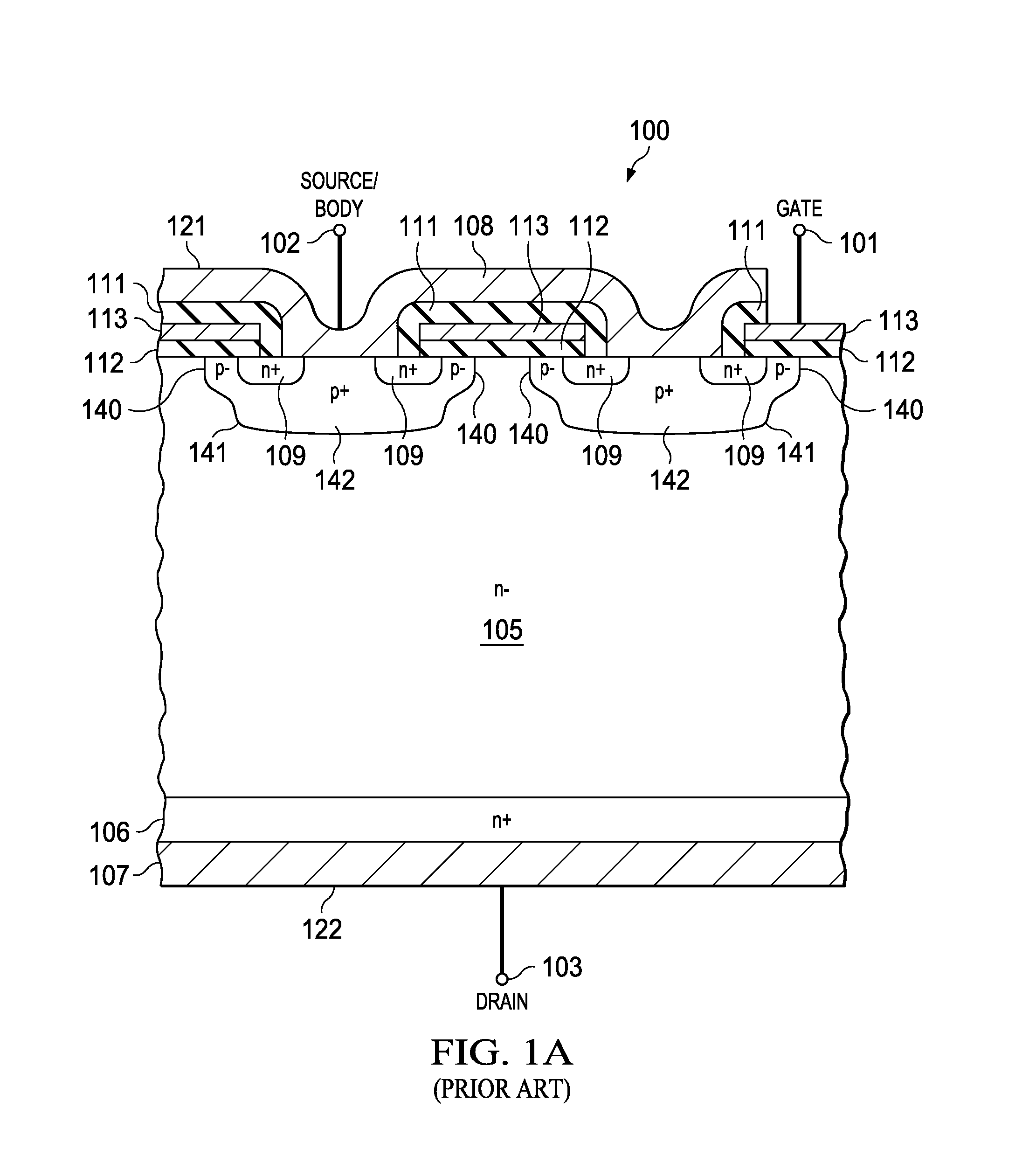Device architecture and method for temperature compensation of vertical field effect devices
a technology of vertical field effect and device architecture, which is applied in the direction of semiconductor/solid-state device manufacturing, semiconductor devices, electrical devices, etc., can solve the problems of thermal runaway of mosfet, increase of mosfet junction temperature, and further increase of resistance, so as to reduce the variation of rdson and reduce the temperature variation of resistance
- Summary
- Abstract
- Description
- Claims
- Application Information
AI Technical Summary
Benefits of technology
Problems solved by technology
Method used
Image
Examples
third embodiment
[0065]In a third embodiment, silicon-chromium is selected as the material of the resistive thin film. The silicon percentage of the silicon-chromium film is chosen in the range of 40% to 80% and the thin film is grown with a thickness in the range of approximately 25 A to approximately 2000 A as required to achieve the desired sheet resistance value for the resistive layer at the base temperature (such as 25° C.) and the desired temperature dependence curve.
fourth embodiment
[0066]In a fourth embodiment, silicon-nickel is selected as the material of the resistive thin film. The silicon percentage of the silicon-nickel film is chosen in the range of 40% to 80% and the thin film is grown with a thickness in the range of approximately 25 A to approximately 2000 A as required to achieve the specified resistance value for the resistive layer at the base temperature (such as 25° C.) and the desired temperature dependence curve.
PUM
 Login to View More
Login to View More Abstract
Description
Claims
Application Information
 Login to View More
Login to View More - R&D
- Intellectual Property
- Life Sciences
- Materials
- Tech Scout
- Unparalleled Data Quality
- Higher Quality Content
- 60% Fewer Hallucinations
Browse by: Latest US Patents, China's latest patents, Technical Efficacy Thesaurus, Application Domain, Technology Topic, Popular Technical Reports.
© 2025 PatSnap. All rights reserved.Legal|Privacy policy|Modern Slavery Act Transparency Statement|Sitemap|About US| Contact US: help@patsnap.com



